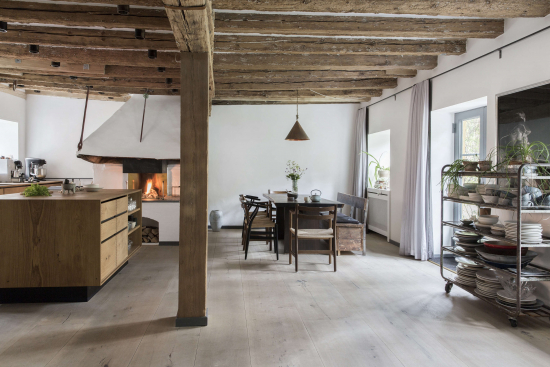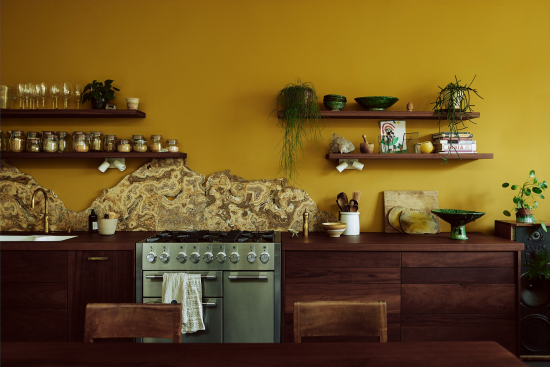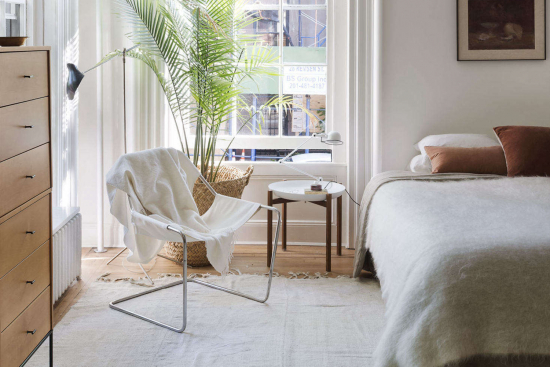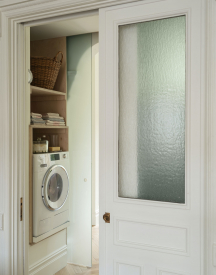How to Paint Kitchen Cabinets: 5 Tips from an Expert Painter
3. Primer is, well, prime.
After you’ve thoroughly prepped, priming is crucial. All-in-one primer and paint products are to be avoided; they don’t do either job well. In truth, oil primer and paint adhere the best and give the longest-lasting results on cabinets, but because of VOCs, oil is outlawed in many states, including New York. (Read our post All You Need to Know About VOCs in Paint.) A good alternative is water-soluble waterborne paint, such as Benjamin Moore’s Advance, which is something like a latex-oil combo. But note that it dries quickly, so it’s wise to add an extender that allows you the time to get a nice finish without brush marks. And if you’re painting something plasticky or otherwise hard to paint, Stix is a good primer to know about.
Going from a dark cabinet to light? Consider tinting the primer to match the final color. If your color transition is extreme, you might instead add a coat of underbody, such as Fresh Start, a thicker, less transparent primer that hides more (and can also be tinted). You can have the tinting done in the paint store; I request 75 percent of the final color, so it’s lighter but close. (For more on the topic, read Back from Black, Meredith’s repainting chronicle.)
Also note: After your base coat dries, it’s important to sand the cabinets all over again—just not as aggressively as the first time.
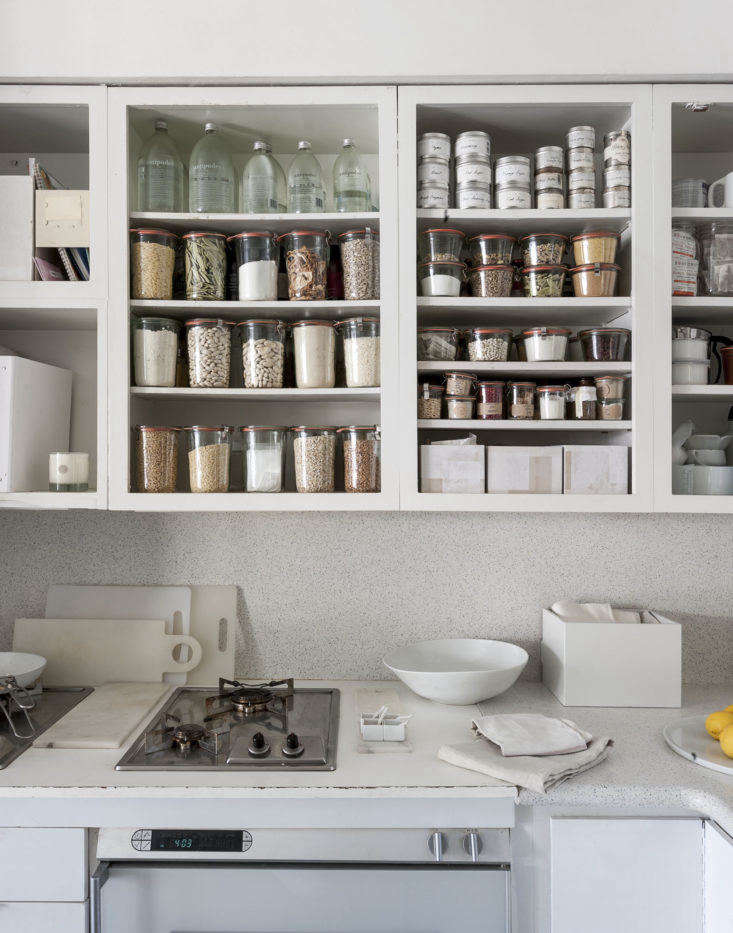
4. Spring for quality paint.
Don’t be penny wise and pound foolish. You’ll get better coverage and results using quality paint. I like Fine Paints of Europe for oils and primers, and Farrow & Ball, Benjamin Moore, and Pratt & Lambert make good waterborne paints and latexes. (The one I use most often is Benjamin Moore Advance.) Two coats of paint are essential for cabinets—you’re building a surface. By the way, to get the nicest finish, use a brush, a 2- to 2 1/2-inch fine bristle brush.


